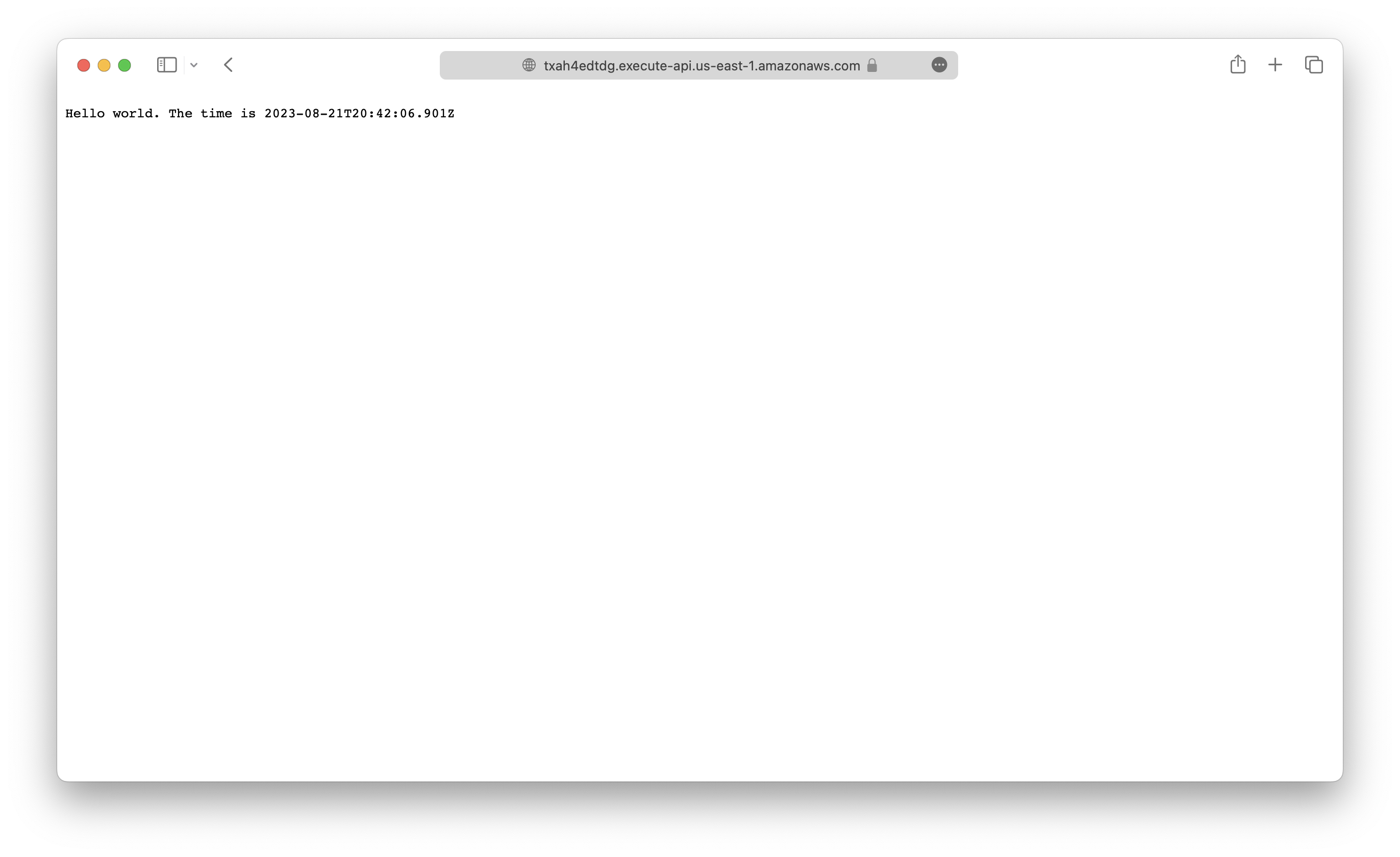Create a Hello World API
With our newly created SST app, we are ready to deploy a simple Hello World API.
 Replace our
Replace our stacks/MyStack.ts with the following.
import { StackContext, Api } from "sst/constructs";
export function API({ stack }: StackContext) {
const api = new Api(stack, "api", {
routes: {
"GET /": "packages/functions/src/lambda.handler",
},
});
stack.addOutputs({
ApiEndpoint: api.url,
});
}
Here we are creating a simple API with one route, GET /. When this API is invoked, the function called handler in packages/functions/src/lambda.ts will be executed.
Note that by default SST sets you up with a TypeScript project. While we are using JavaScript in this guide, the advantage with this setup is that you can incrementally adopt TypeScript.
Let’s go ahead and deploy this.
Starting your dev environment
We’ll do this by starting up our local development environment.
 SST features a Live Lambda Development environment that allows you to work on your serverless apps live.
SST features a Live Lambda Development environment that allows you to work on your serverless apps live.
$ pnpm sst dev
The first time you run this command it’ll ask you for the name of a stage. A stage or an environment is just a string that SST uses to namespace your deployments.
Please enter a name you’d like to use for your personal stage. Or hit enter to use jayair: Jay
For your local deployment it’s recommended you pick something unique to you. Like your username.
Running sst dev will take a couple of minutes to deploy your app and bootstrap your account for SST.
SST v2.1.14 ready!
→ App: notes
Stage: Jay
✓ Deployed:
API
ApiEndpoint: https://guksgkkr4l.execute-api.us-east-1.amazonaws.com
The ApiEndpoint is the API we just created. Let’s test our endpoint. If you open the endpoint URL in your browser, you should see Hello World! being printed out.

Deploying to prod
To deploy our API to prod, we’ll need to stop our local development environment and run the following.
$ pnpm sst deploy --stage prod
We don’t have to do this right now. We’ll be doing it later once we are done working on our app.
The idea here is that we are able to work on separate environments. So when we are working in our personal environment (Jay), it doesn’t break the API for our users in prod. The environment (or stage) names in this case are just strings and have no special significance. We could’ve called them development and production instead. We are however creating completely new serverless apps when we deploy to a different environment. This is another advantage of the serverless architecture. The infrastructure as code idea means that it’s easy to replicate to new environments. And the pay per use model means that we are not charged for these new environments unless we actually use them.
Now we are ready to create the backend for our notes app. But before that, let’s create a GitHub repo to store our code.
For help and discussion
Comments on this chapter

